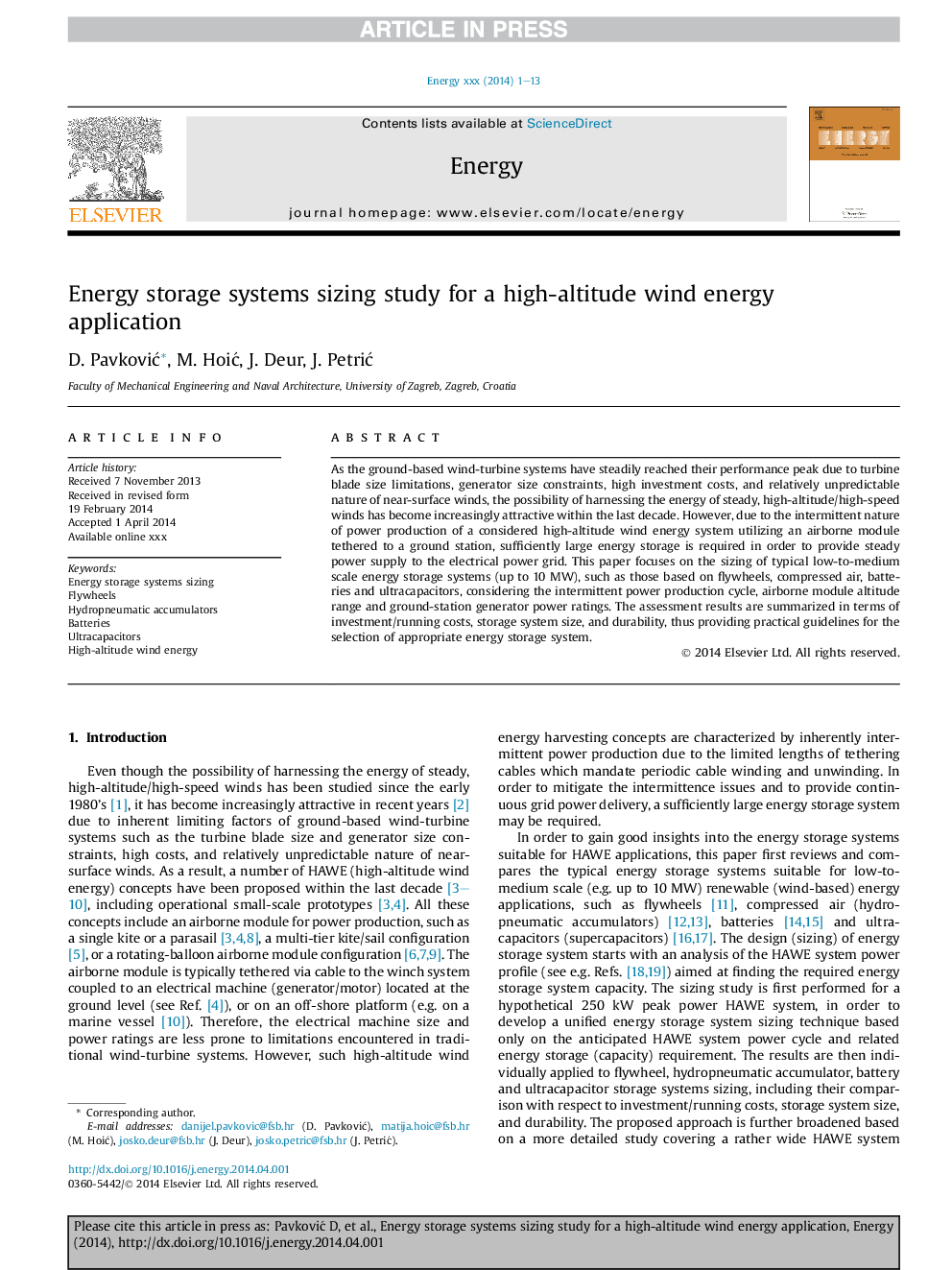| Article ID | Journal | Published Year | Pages | File Type |
|---|---|---|---|---|
| 8076508 | Energy | 2014 | 13 Pages |
Abstract
As the ground-based wind-turbine systems have steadily reached their performance peak due to turbine blade size limitations, generator size constraints, high investment costs, and relatively unpredictable nature of near-surface winds, the possibility of harnessing the energy of steady, high-altitude/high-speed winds has become increasingly attractive within the last decade. However, due to the intermittent nature of power production of a considered high-altitude wind energy system utilizing an airborne module tethered to a ground station, sufficiently large energy storage is required in order to provide steady power supply to the electrical power grid. This paper focuses on the sizing of typical low-to-medium scale energy storage systems (up to 10Â MW), such as those based on flywheels, compressed air, batteries and ultracapacitors, considering the intermittent power production cycle, airborne module altitude range and ground-station generator power ratings. The assessment results are summarized in terms of investment/running costs, storage system size, and durability, thus providing practical guidelines for the selection of appropriate energy storage system.
Keywords
Related Topics
Physical Sciences and Engineering
Energy
Energy (General)
Authors
D. PavkoviÄ, M. HoiÄ, J. Deur, J. PetriÄ,
